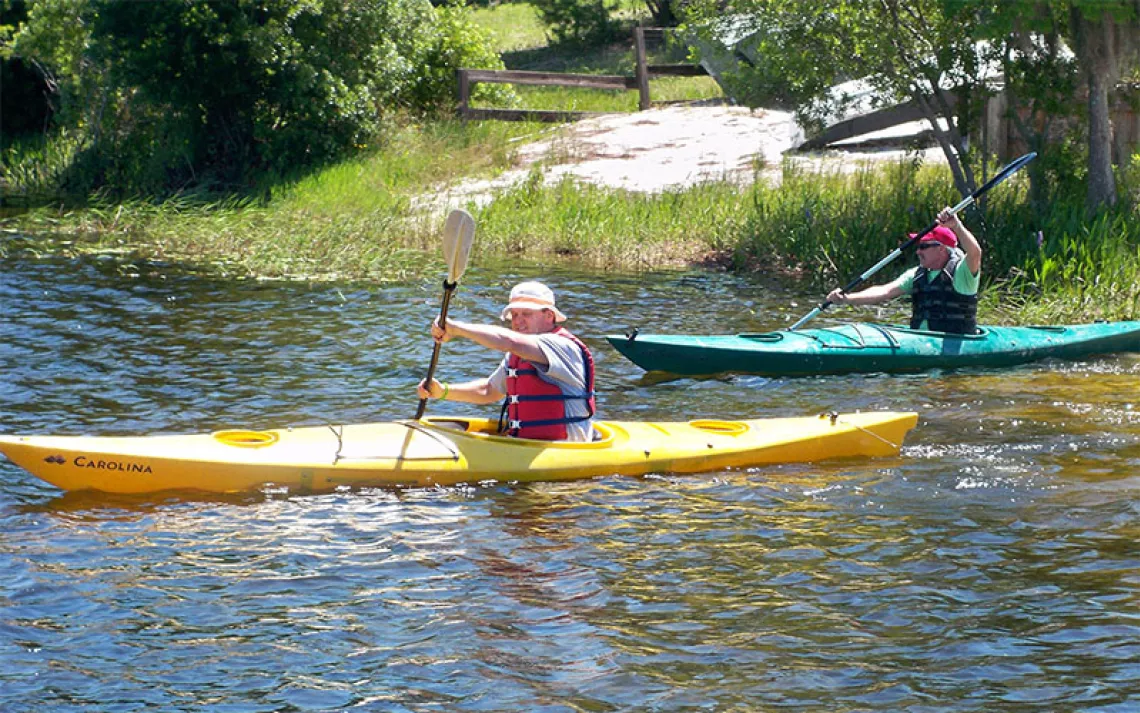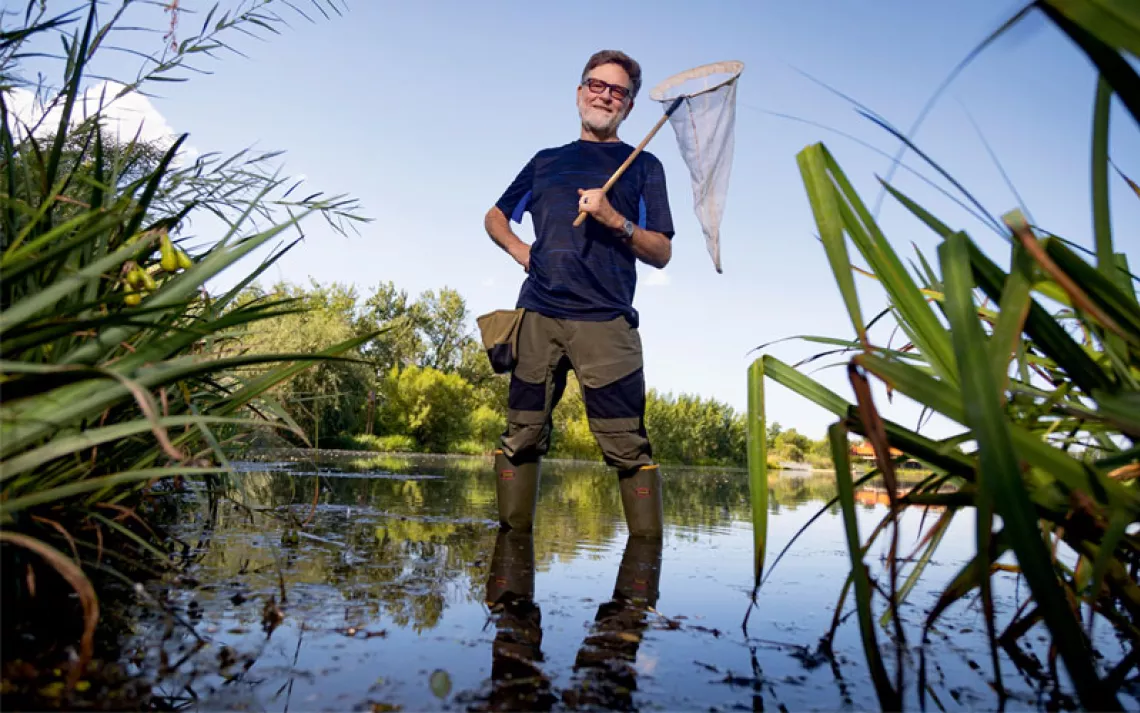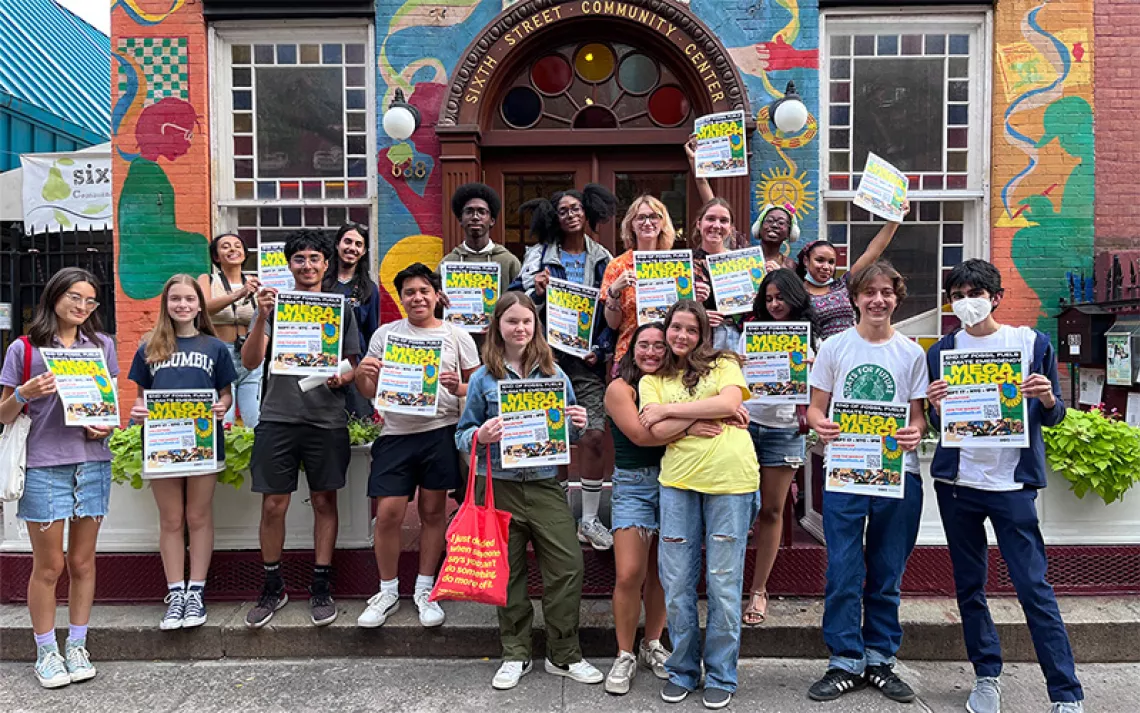5 Organizations That Are Transforming Eco Curricula
Easily downloadable resources help educators bring nature into the classroom
For children, nature is an opportunity to engage in a world of vibrant sensory experiences: toes curling on sand, the icy crunch of a snowball, the thrill of spotting a deer among trees, watching a brilliant caterpillar explore a leaf.
Yet opportunities to connect with nature often get reduced to special occasions as children get older and spend more time indoors at school. Educators are increasingly realizing that this isolation from nature isn’t great for kids’ health or their school experience. Teachers are coming to learn that the environment can be a dynamic educational resource, as both a tool for teaching and as a classroom in itself.
New research suggests that environmental education programs provide an invaluable way to teach students about science. In one study of 400 high school students, environment-based programs led to increased achievement motivation and test scores. Other studies have linked outdoor classroom activities (or teaching through an environmental lens) to increased student engagement, higher academic performance, conflict resolution skills, and positive emotional-social development. By teaching with a nature-based program that encourages kids to analyze the world around them, educators can help spur their students to become active stewards of their community.
Turning the outdoors into a classroom can also be effective at addressing public health issues. As younger people devote more time to smartphones and streaming media culture, our relationship with nature has changed. Studies have shown that a lack of outdoor exposure affects people’s social and cognitive development. Or, put another way, lack of time spent in nature makes us more unhappy and unhealthy. Some communities are trying address this problem in the very place where kids spend most of their time—in school. Environment-based education has been shown to be effective at treating anxiety and attention-deficit/hyperactivity disorder (ADHD), reducing obesity, and strengthening motor coordination and physical ability.
State-level adoption of environmental education programs in public schools increased with the revision of the Next Generation Science Standards (NGSS) in 2013. Adopted by 19 states plus the District of Columbia, the standards are a K–12 science framework developed by the National Research Council. They emphasize three principles as benchmarks for successful education in America’s public schools: discipline-specific core concepts, scientific and engineering practices, and cross-cutting (i.e., multidisciplinary) concepts. Environmental literacy is infused throughout the science standards as key to fostering a holistic academic experience. Schools are taking notice—and taking action. Model programs include the Edible Schoolyard Project at Martin Luther King Jr. Middle School in Berkeley, California; Alabama’s Project Pond at Legacy Elementary School (winner of the U.S. Department of Education’s 2018 Green Ribbon Schools award); and Maryland’s statewide environmental literacy initiative.
In response to the need for environmental literacy resources, many organizations offer easily downloadable classroom activities and professional development training that can help teachers transform campuses into green schoolyards and living classrooms. Below is just a sample of some of the organizations that are helping to bring environmental learning to schools.
Bringing kids outside to learn about their environment is one of the most effective ways to teach science. But creating an outdoor lesson can also be daunting for many teachers. Enter BEETLES! Created by a group of environmental educators and professional learning experts at the Lawrence Hall of Science (UC Berkeley's Public Science Learning Center), BEETLES offers environmental education resources that serve both student and teacher. “If you’re trying to have deep impact at scale, teachers need good tools and ongoing professional learning to improve their craft,” says Craig Strang, principal investigator on the BEETLES team and associate director of the Hall of Science. The BEETLES curriculum supports teachers with in-depth science explanations, step-by-step instructions, and adaptable templates that create rewarding experiences for all participants. The resources are field-tested by science experts around the world and use a student-centered approach that prioritizes class discussion and exploration in nature. “When you step outdoors, you have these incredible, whole ecosystems that provide kids with an understanding of the complexity and beauty of the natural world,” Strang says. “There are so many more opportunities for individual students to explore, ask their own questions, and pursue things that are relevant to them.” The BEETLES materials also strive to be inclusive and culturally relevant for students from across many backgrounds. “All of our materials are designed based on research about how people learn. The learning happens through discussions with each other and speaks to the things we hold most important in learning experiences,” Strang says.
 Photo courtesy of Craig Strang, principal investigator on the BEETLES team
Photo courtesy of Craig Strang, principal investigator on the BEETLES team
“Kids need to see themselves as part of nature, not separate from [it],” says Jessica Handy, coordinator of education at Kiss the Ground. “We are not the center of the universe; we are a part of it, and we can choose to have a positive or negative role in it.” Based on the principle that soil conservation is one of the best ways for sequestering excess carbon, Kiss the Ground partners with corporations, restaurants, and farmers to create a “regenerative” food culture. Since healthy food choices start with early education, Kiss the Ground offers a NGSS-aligned curriculum for middle school teachers to educate students on the carbon cycle and soil science via a hands-on project. The curriculum, Handy says, is “a catalyst for schools to address climate education.” Though easy to overlook, healthy soil is an essential part of a healthy, functioning ecosystem. “[Soil] is something a lot of people don’t pay attention to because it’s under our feet,” Handy says. “But if we could shrink ourselves, we’d be blown away by the magnitude of life. There’s a whole system under there that’s thriving."
NATIONAL GEOGRAPHIC’S GEO-INQUIRY PROCESS
Geography isn’t just about maps. National Geographic’s Geo-Inquiry Process guides educators and students in analyzing real-world issues by thinking like a geographer: Where is it? Why is it there? Why should I care? By building projects around a location-specific geo-inquiry question, students are guided through five phases of collecting and analyzing data, visualizing models, and acting on their findings. The process fosters team-building skills, analytical competency, and environmental stewardship by encouraging students to create solutions to the problems they observe. “When kids have a sense of empowerment [in their community], they will not quit,” says Jim Bentley, a National Geographic fellow and teacher ambassador for California’s Education and the Environment Initiative. Bentley used the Geo-Inquiry Process as a vehicle not just for citizen science, but also for civic engagement. His sixth grade students in Elk Grove, California, identified a lack of equitable access to clean water in their city. By lobbying their school district and municipal services, the students successfully opened a water-filling station in a public park near their school. Evaluating student participation after the project, Bentley was stunned by his findings: “95 percent of students were excited beyond belief” and fully engaged in seeing the project to its completion. The highest-achieving participants were English learners and previously underperforming students. “They’d never had the opportunity to do something so real,” he says. “It’s completely outside the realm of school projects. It’s not worksheets—it’s ultimately geared toward action.”
Accessing natural areas is simply not feasible for many school teachers across the United States. Fortunately, then, there’s Green Schoolyards America, which transforms school grounds into green spaces with trees, grass, edible plants, and local biodiversity so that students can experience nature within immediate reach. Founder Sharon Danks started Green Schoolyards to address the lack of accessible green spaces for students in urban areas. “There are approximately 130,000 acres of public land in the form of school grounds,” Danks says, “with more users in a year than well-known parks like Yosemite. These lands are heavily used but not heavily invested in.” Green areas that can be nurtured by students provide “a place where kids can interact with nature in a place they already go. Trees and nature have the ability to restore calm and focus and allow children to engage with each other positively.” Green Schoolyards works with school districts and administrators to help with the design, construction, and curricula training for creating a greener campus. The website provides 235 downloadable activity guides developed in collaboration with 187 environmental organizations. The guides span all climates and are globally applicable, even accounting for seasons in both hemispheres. The organization has been featured in Forbes and other media for revolutionizing how school grounds are designed. “Green schoolyards are the place to model the green city you want to have outside of school,” Danks says.
Aaron Ableman founded Alive & Awake to educate students about the importance of planting trees to sequester excess carbon and to rebuild a positive human connection with nature. “We forget that we have many of the solutions we need right now, from nature,” Ableman says. “We must work at scale, and with urgency, so that kids will learn the multitude of benefits that come with planting a seed.” Alive & Awake sells teachers “musical tree kits” (starting around $25) that inspire students to plant trees in their community by providing music downloads from various artists. The seed packets come with soil for planting, and the activities educate students on carbon sequestration as a way to address climate change. A sponsorship programs allows individuals or companies to underwrite such class activities. To amplify the program’s scale, Alive & Awake partners with ForestNation and other global environmental organizations that facilitate community-led planting programs for local tree species. “Climate change touches every aspect of human society,” Ableman says. “We have to think from an intersectional standpoint. Mixing environmental education with arts, culture, and media is a strategy for creating an innovative experience that inspires and motivates students to change their world.”
 The Magazine of The Sierra Club
The Magazine of The Sierra Club




